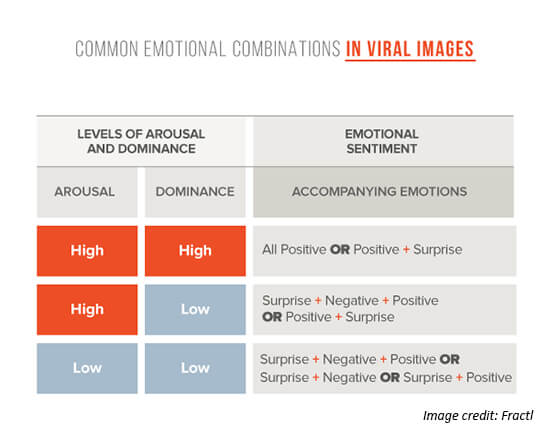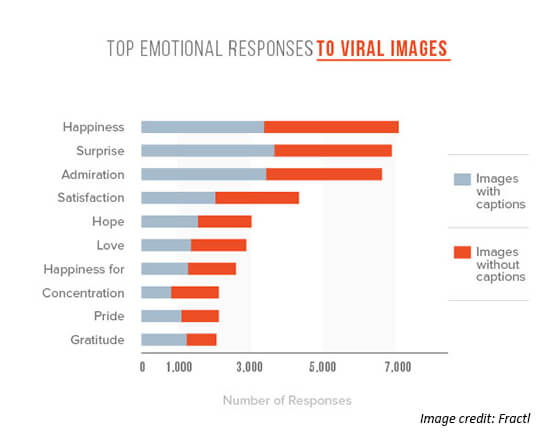 If you’re on a communications team, there’s a good chance the bigwigs have asked you to produce something viral.
If you’re on a communications team, there’s a good chance the bigwigs have asked you to produce something viral.
Why?
Because it is one of the most cost-effective ways to generate high levels of awareness and drive conversions.
Consider Roman Originals, the brand behind the now infamous “dress” debate of 2015.
Whether you were Team Black and Blue or Team Gold and White, it only took a photo to ignite a heated debate over the color, and the UK-based retail brand inadvertently received a ton of media attention.
Within a month after the story broke, the site’s organic traffic increased by 420 percent, and sales of the dress saw a whopping 560 percent increase.
That episode was truly what a PR team dreams of, and proves why every brand wants a viral hit.
It can also leave many wondering whether or not something so unpredictable can be replicated.
The good news is that research indicates there is a way to produce content that has mass appeal, but it must strike the right emotional chord.
Viral Content Can Be Reproduced
A recent study done by Jacopo Staiano of Sorbonne University and Marco Guerini of Trento Rise, took a closer look at the roles emotions play in virality.
They discovered content goes viral when it evokes an emotional response that falls within certain configurations of arousal and dominance; two dimensions that psychologists use to categorize emotions.
More specifically, these dimensions describe the following:
- Arousal ranges from excitement to relaxation. Anger is a high-arousal emotion. Sadness is low-arousal.
- Dominance ranges from submission to feeling in control. Fear is low-dominance, while an emotion someone has more choice over, such as admiration, is high-dominance.
We wanted to see if we could determine what the ideal viral configurations look like, so we turned to a hot spot for viral content: Reddit.
Pulling the top images from the r/pics community, we used the Pleasure-Arousal-Dominance (PAD) model to analyze the most frequent emotional responses.
We discovered there are three ideal emotional combinations for viral content as visualized below.

Surprise is a Viral Content Home Run
Our study echoes previous research on the value of emotionally complex responses, but it also emphasizes the value of surprising your audience.
Respondents reported feeling surprised regardless of the level of arousal or dominance.
Triggering this response can help your team generate massive brand awareness.
A great example comes from one of the hottest viral brands out there right now, Carlsberg.
The Danish brewer unveiled the world’s first beer-serving poster, complete with an actual tap so bypassers could help themselves.
The poster, complete with a playful hashtag #ProbablyTheBest, is surprising in every sense of the word.
By tapping into this highly viral emotion, the brand managed to generate more than three million Twitter impressions in 24 hours, helping them reach more than 60 million consumers globally.
Maximize Social Shares through Admiration
Our respondents also frequently reported that viral images made them feel good.
These feelings ranged anywhere from happiness to gratitude, as visualized in the Top 10 list shown below:

Admiration, happiness, and love, for instance, were the most common positive emotions to appear when dominance was high.
Feelings of high dominance are closely associated with higher social shares, so if you want your content to generate this type of high social exposure, produce something people can admire or find inspirational.
The Nike ‘Flyease’ story works because it taps into a powerful high-dominance configuration.
In a 180-degree-turn from the brand’s familiar ‘jump high, run fast’ messaging, the campaign emerged after long-time employee, Jeff Johnson, suffered a debilitating stroke.
Nike wanted to create a sneaker for people with limited mobility like Johnson.
Nike designer, Tobie Hatfield, was inspired even more after reading a letter penned by Matthew Walter, a teenager with cerebral palsy.
The video worked because it tells a highly emotional story with relatable characters such as Hatfield and Walter.
Audiences responded favorably to the incredibly personal story, helping the video earn more than one million views on YouTube to date.
Negative Content Can Still Be Successful
Let’s face it: No one wants to see something that will make them feel bad.
It’s an incredibly uncomfortable feeling.
But, research indicates it is also a tremendously powerful reaction that can leave a lasting impression when leveraged properly.
For instance, if arousal is high enough, viral content can be primarily negative.
Only two out of the 100 images in our study evoked purely negative emotions, but both of these images worked because they triggered high-arousal emotions such as anger, fear, and distress.
Consider this campaign that re-imagines superheroes so they reflect a more realistic body type.
Using Photoshop, designers added a few extra pounds to comic book icons in an effort to mimic more realistic body types and encourage a discussion on body image issues.
And whether or not audiences agreed that the new images were accurate, the campaign was incredibly successful.
In just nine days, it generated nearly 1,300 stories and more than 100,000 social shares.
Remember Virality isn’t Always a Matter of Luck
Even though “The Dress” seemed to come out of left field, the good news for your team is that research continues to prove viral potential isn’t a matter of luck.
It’s actually the result of a highly emotional experience, and emotions are what compel people to take action.
The feelings you experience after seeing, hearing, or reading something that aligns with one of the three ideal emotional configurations listed above will influence behavior.
So the next time someone asks you for something viral, remember there’s a method to the madness, and all it takes is for your content to strike the right emotional chord.
Chart images created by Fractl and used with their permission.
image credit: shutterstock